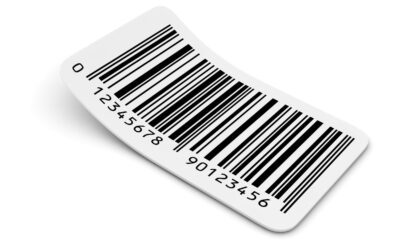
Managing assets effectively is crucial for businesses, no matter their size. Whether you’re tracking equipment, inventory, or other valuable resources, staying organised and efficient is the key to success. One foundational element in this process is asset identification. But what exactly does that entail? In this guide, we’ll walk you through asset identification, from what it is to why it matters for efficient asset tracking and how you can benefit from using modern identification techniques.
What Is Asset Identification?
Identification of assets, at its core, is a process that assigns unique tags or labels to the assets in order for them to be better tracked and managed. It involves giving your inventory items an ID, such as their name, which will make them distinguishable from each other. Asset identification simply provides the base from which an asset management system can leverage full visibility of an organisation’s assets throughout their respective life cycles.
In this regard, asset ID refers to the unique identification number assigned to an asset. It could be in the form of an asset ID number or even a letter-number combination that allows for marking a particular item. The asset ID meaning goes beyond just being a label; it is a tool for the monitoring of assets, smoothing the processes of inventory, and enhancing accountability. Because there is a clear ID, you will be able to track the asset’s location, condition, maintenance status, or even historical data, all making your resources much easier to manage.
Asset identification also helps reduce administrative overhead. Instead of manually searching for information about an asset, employees can simply refer to the asset ID to access all relevant data at a glance. This reduces delays and ensures that everyone has access to information that is accurate and current. In other words, asset identification helps you know what you have, where it is, and how it’s being used. It provides this level of visibility that is invaluable in ensuring the best allotment of resources or that nothing has gone astray.
How to Identify Different Types of Assets
Identifying assets is not a one-size-fits-all approach. Different kinds of assets need different strategies for identification. Here, we’ll break down how to identify current assets, fixed assets, and identifiable intangible assets to make your asset management as seamless as possible.
I. Current Assets
Current assets are items that can quickly be converted to cash, typically within a year. These cover accounts, cash reserves, and inventory. Clear labels employing straightforward, easily available techniques like barcodes or asset tags help one properly identify present assets. Having a clear identification system in place guarantees that you always know what is in your stock and helps you to effectively monitor items like raw materials or completed goods.
As inventory goods pass several phases of the supply chain, for instance, barcodes scanned as they go might tag them. This helps companies to have real-time information on their present assets, therefore reducing the possibility of stockouts or overstocking. Cash equivalents can also be monitored with financial tools that give every account or fund individual identification.
II. Fixed Assets
Long-term resources used by the company over multiple years are known as fixed assets; examples include buildings, vehicles, or machinery. Since these objects are generally valuable and prone to depreciation, knowing how to identify fixed assets is absolutely vital. Key here is assigning a unique asset ID number, together with digital tags or RFID technology to enable tracking of their location, maintenance requirements, and state. Effective identification helps you to keep sight over these important resources, hence lowering loss or underutilization.
Given their great value and lengthy lifetime, fixed assets may need more thorough monitoring. A piece of machinery might, for instance, contain an RFID tag tracking its use, maintenance history, and current condition. Preventive maintenance scheduled with this information helps to extend the lifetime of the asset and stop expensive breakdowns. In financial reporting, proper identification also counts since precise data on asset depreciation is required for tax compliance and financial planning.
III. Identifiable Intangible Assets
Identifiable intangible assets—that is, non-physical objects with value—such as copyrights, trademarks, patents, or software. These assets are absolutely vital for corporate operations even though they do not show themselves physically. Monitoring these assets can be a little more abstract; you might record ownership, renewal dates, and related expenses using software. Giving every intangible asset an asset ID guarantees that significant intellectual property is properly recorded and controlled, so offering information on how these assets support the value of your company.
A corporation having several software licenses, for instance, can assign an asset ID to every license, recording specifics such as expiration dates, user count, and related expenses. This guarantees that software licenses are renewed on time and helps to avoid compliance problems, preventing disruptions in company operations. Tracking intangible assets, including trademarks and patents, for renewal dates helps to guarantee that priceless intellectual property stays under protection.
Clarifying the Definition of an Asset
Let’s back off to grasp what an asset is before delving further into identification. In business, an asset is something of value possessed by a firm that will help it run. Assets could be real objects like inventories or intangible things like intellectual property. Good operational efficiency and management depend on accurate asset identification.
Depending on their business and demand, different companies could classify and name assets differently. A tech company would give software and patents top priority, whereas a construction company might classify its tools as a fixed asset. Knowing your asset categories—fixed, current, or intangible—allows you to create an identification system fit for your company.
A manufacturing company would, for instance, concentrate on tracking machinery, raw materials, and completed things while a service-based company might concentrate more on tracking software, client data, and intellectual property. Every asset, of whatever kind, should be correctly recorded, tracked, and ready for usage inside the company.
Methods for Asset Identification
Identification methods play a vital role in asset management, helping you assign and track assets effortlessly. Let’s explore the most common methods used today and the importance of managing your asset ID number correctly.
Barcodes
Barcodes are a tried-and-tested method for asset identification. They involve attaching a label to an asset, which can be scanned using a barcode reader. This simple method is cost-effective, widely recognised, and easy to implement, making it perfect for small to medium-sized operations that need a basic identification solution.
Barcodes are especially useful for tracking inventory and current assets. By scanning barcodes, businesses can update their asset records in real-time, reducing manual data entry errors. This system allows for accurate stock management, quick audits, and efficient asset movement tracking, ensuring that resources are where they need to be.
RFID (Radio Frequency Identification)
Using radio waves, RFID finds assets without direct line-of-sight. Since RFID tags may be placed into machinery or vehicles, they are a perfect fit for settings where conventional barcodes could fade. Particularly for asset movement inside bigger facilities, RFID tags are a great tool for asset identification and real-time tracking since they can contain more data than barcodes.
High-value fixed assets like machinery and cars are frequently RFID-based. Unlike barcodes, RFID tags can be read remotely, so assets can be traced even in cases of limited access. This is very helpful in sectors like manufacturing or construction, where tools could be dispersed over huge areas. By helping to guarantee that assets are counted, RFID lowers the danger of loss or theft.
QR Codes
QR codes provide considerably more freedom compared to conventional barcodes. Any smartphone can scan a QR code, making it quite a practical approach to asset identification. Additionally, linking to a comprehensive asset history, QR codes let anyone with database access read maintenance records, present conditions, and more.
QR codes are very successful for items that need comprehensive information to be easily available on-site. From a mobile device, maintenance professionals can, for instance, inspect a piece of equipment’s service history by scanning a QR code, check for forthcoming repair needs, and amend records. This degree of accessibility guarantees that everyone has the knowledge they need right at hand and helps to simplify processes.
Digital Tagging
Digital tagging includes using cloud-based software to manage asset information. Instead of physical tags, data is maintained electronically, and asset ID numbers are generated and linked within an online system. This type of system makes it easier to manage a large number of assets efficiently, and the use of digital tags allows for seamless integration with other business processes.
Digital tagging is particularly useful for intangible assets, such as software licenses and intellectual property. By maintaining electronic records, businesses can track ownership, renewal dates, and associated costs without the need for physical labels. Digital tagging also enables better collaboration, as multiple team members can access asset information simultaneously, ensuring that everyone is on the same page.
When it comes to choosing the best method for your organisation, consider your specific needs and resources. An important part of identification is assigning and managing an asset ID number, ensuring that each asset is distinct and traceable. Using reliable systems for asset identification is crucial—choosing a robust digital solution can help you keep track of even the most complex assets effortlessly.
Asset Identification in Cybersecurity

In an environment where technological advancements are accelerating daily, businesses face unique challenges in adapting and managing their resources effectively, and asset identification is crucial for ensuring cybersecurity. It’s not just about tracking physical assets anymore; knowing your digital assets and having a robust identification system can help mitigate risks associated with data breaches and unauthorised access.
Identifying assets within your IT assets—such as computers, servers, or sensitive information—is the first step in protecting them. By clearly identifying these assets, companies can better monitor access points and track any suspicious activity. Understanding asset movement through a network allows for better control and can minimise the impact of potential cybersecurity threats. Asset identification in this context is all about having the visibility you need to quickly identify vulnerabilities and take preemptive action.
For example, identifying hardware components with asset ID numbers helps IT teams locate and manage equipment efficiently, ensuring no part of your system is left unmanaged. This visibility means that potential entry points for cyberattacks are limited, helping protect your business’s data integrity.
Additionally, software assets such as applications and databases must be identified and tracked to ensure that they are properly secured. By assigning unique IDs to each software asset, businesses can monitor usage, identify outdated or vulnerable versions, and ensure that only authorized personnel have access. This proactive approach to asset identification helps in maintaining a secure IT environment and reduces the risk of data breaches.
Managing Asset Identification Risk
Tracking assets reduces risks as much as it does efficiency. Asset identification risk management ensures that the appropriate assets are accessible when needed and thereby prevents loss, theft, or mismanagement. Inaccurate inventory or lost resources resulting from poor asset identification can cause major problems, costing your company time and money.
Periodically running audits is one of the main ways to guarantee reliable asset tracking. By means of these audits, you can confirm the existence and state of assets, therefore ensuring that records reflect reality. Frequent audits provide early identification of disparities, thereby enabling you to act with corrections before more serious issues develop. Investing in strong software programs that can automate most of the asset-tracking process is another tactic. These instruments can give you real-time information on asset conditions, therefore enabling the control required to properly allocate resources and reduce risk.
Another crucial component of risk control is teaching your staff appropriate asset identification techniques. Ensuring everyone understands the proper techniques for asset identification and tracking reduces mistakes and streamlines procedures generally. Furthermore, the application of multi-layered security solutions, including access restrictions and asset movement monitoring, helps to reduce risks related to inadequate asset tracking.
Role-based access restrictions, for instance, let a corporation guarantee that only authorised staff members may change asset data. This guarantees data integrity and lessens the possibility of manipulation. Combining this with frequent asset identification best practices training courses can help foster a culture of responsibility whereby everyone shares in keeping correct records.
Benefits of Reliable Asset Identification

Reliable asset identification brings several key benefits that enhance overall business performance. Here, we will discuss some of the most important advantages in detail:
1. Enhanced Operational Efficiency
Knowing exactly where your assets are and how they are being used helps companies decide how best to enhance daily operations. Proper tagging of every asset helps to simplify maintenance plans, guarantee best use of resources, and prevent the misplacing of priceless equipment. This results in lower downtime and higher output all around in every level of your company.
2. Improved Forecasting and Planning
Reliable asset identification helps businesses make better predictions regarding asset utilisation. For example, by having comprehensive data on each asset, you can identify underutilised items that could be sold or redeployed elsewhere. This minimises waste and ensures that resources are always being put to the best use. Planning maintenance activities also becomes easier when you have accurate data about asset conditions and usage patterns, reducing the risk of unexpected breakdowns.
3. Simplified Compliance and Accountability
Many industries have stringent compliance requirements regarding asset tracking. A well-organized identification system makes it easy for businesses to meet these standards. For instance, sectors like healthcare, finance, and manufacturing need to track equipment and resources for regulatory purposes. Reliable asset identification ensures smooth audits and makes sure that all necessary data is readily available, thereby reducing compliance-related stress and minimising errors.
4. Better Lifecycle Management
Good asset identification supports the best lifetime management. Accurate information on every asset lets companies decide on disposal, upkeep, and acquisition with knowledge. Planning replacements or improvements depends on knowing when an item is nearing its end of useful life. This proactive strategy reduces expenses, avoids unanticipated downtime, and ensures that assets are always operating at their best.
5. Cost Reduction and Financial Management
Accurate and timely asset data helps companies lower unneeded expenses connected to misplacement, downtime, and ineffective use. Correct identification saves administrative expenses since less time is wasted updating erroneous records or looking for missing objects. Having a whole perspective of all assets also facilitates strategic financial decisions such as sales of extra machinery or reallocation of underused resources.
6. Increased Transparency and Collaboration
Improved departmental communication results from a reliable asset identification system. From an asset’s present location to its maintenance history, team members have simple access to pertinent data about it. This openness guarantees that everyone engaged in asset management or use is well-informed, therefore enhancing operational cohesiveness and decision-making.
Simple and Reliable Asset Identification with itemit
At the foundation of good asset management, asset identification helps you monitor, control, and maximise the use of your resources. Giving every asset a unique ID guarantees that you always know what you have, where it is, and how it is helping your company, whether you are handling non-physical assets like intellectual property or tangible goods like machinery. Selecting an effective asset tracking solution—such as our software from itemit—helps you to simplify processes, lower expenses, and protect your assets for long-term viability.
From fixed objects to intangible resources, itemit allows you to quickly manage all of your assets and guarantee total awareness and control over your company operations. Start managing your assets now with a reliable and easy tracking system to avoid slowing down resulting from poor asset tracking. If you want to know more about asset identification or simply have any questions left, do not hesitate to contact us at team@itemit.com.

Try itemit
Choose a better way to track
your assets.
Start your free 14-day trial now!

Keep Learning
itemit Blog
Tips, guides, industry best practices, and news.
What Is Active RFID? A Complete Guide to Smart RFID Tags
Discover what Active RFID is, how active tags function, and the key benefits and use cases that make this technology essential for modern tracking systems.
Everything You Need to Know About 2D Barcodes
Discover everything about 2D barcodes, including how they work, their benefits, and how they are revolutionizing industries and improving business operations
Complete Guide to Asset Lifecycle Management and Its Benefits
Learn about asset lifecycle management and how it helps businesses optimize asset usage, reduce costs, and improve efficiency throughout the asset’s life.



